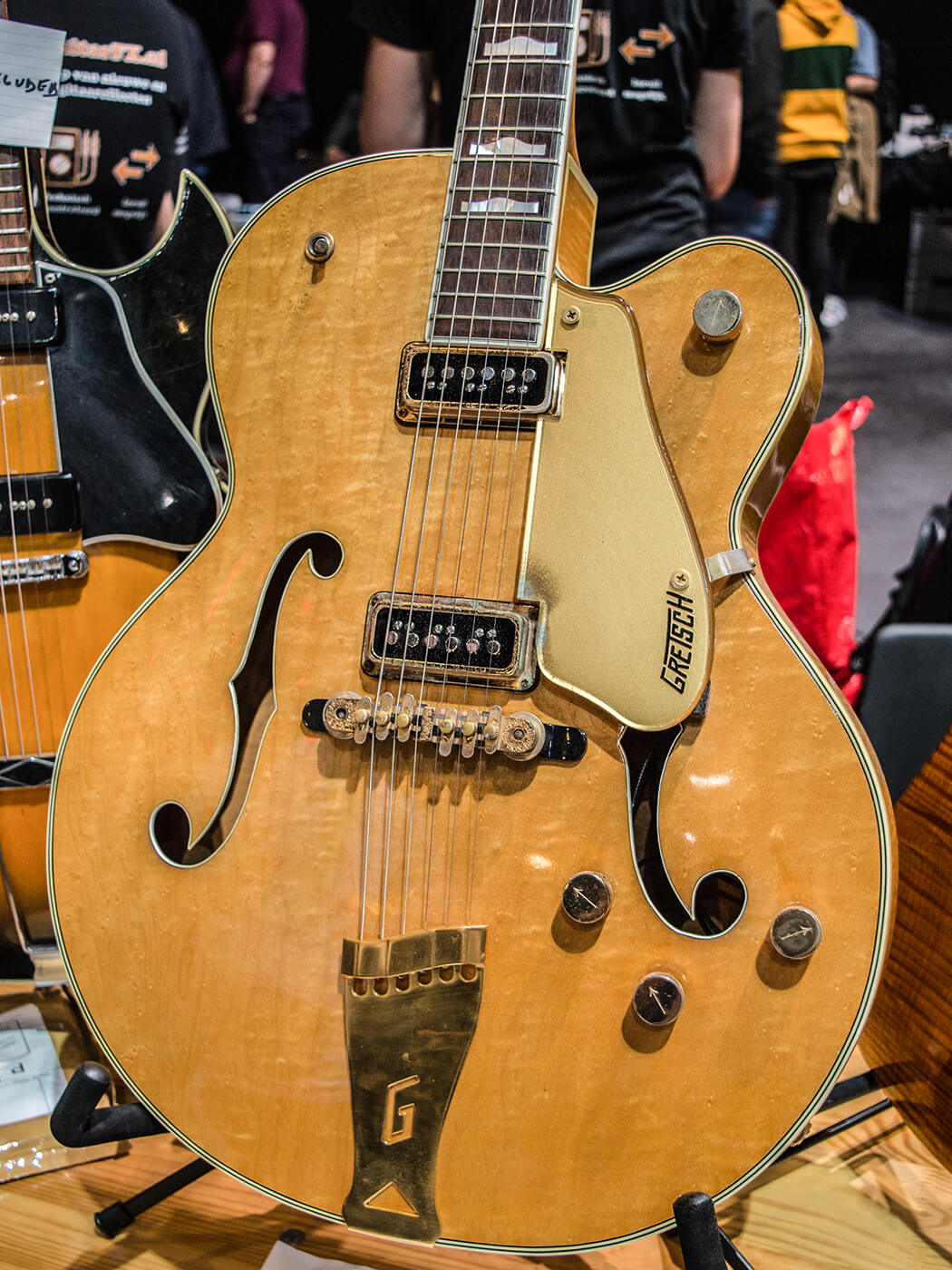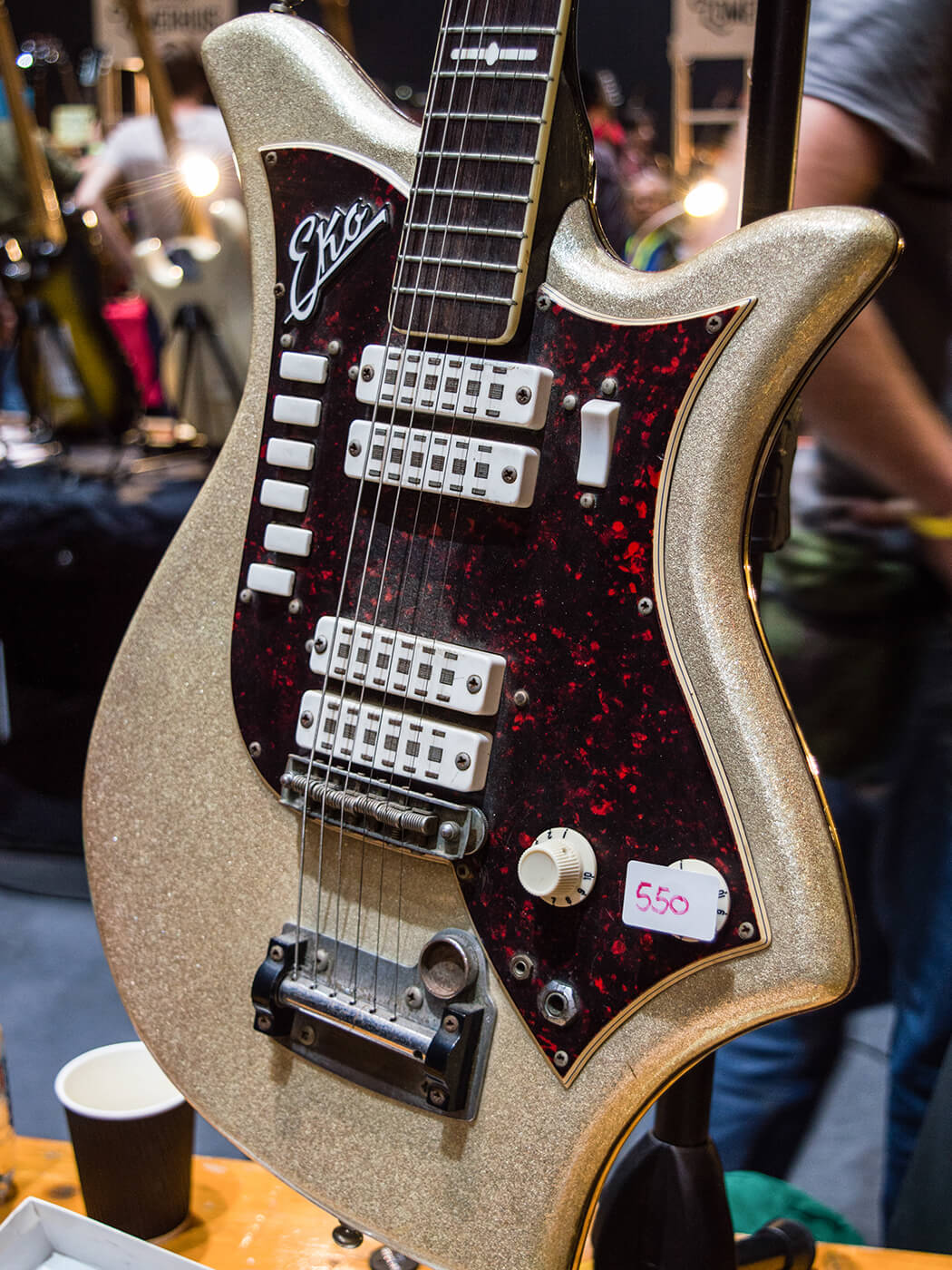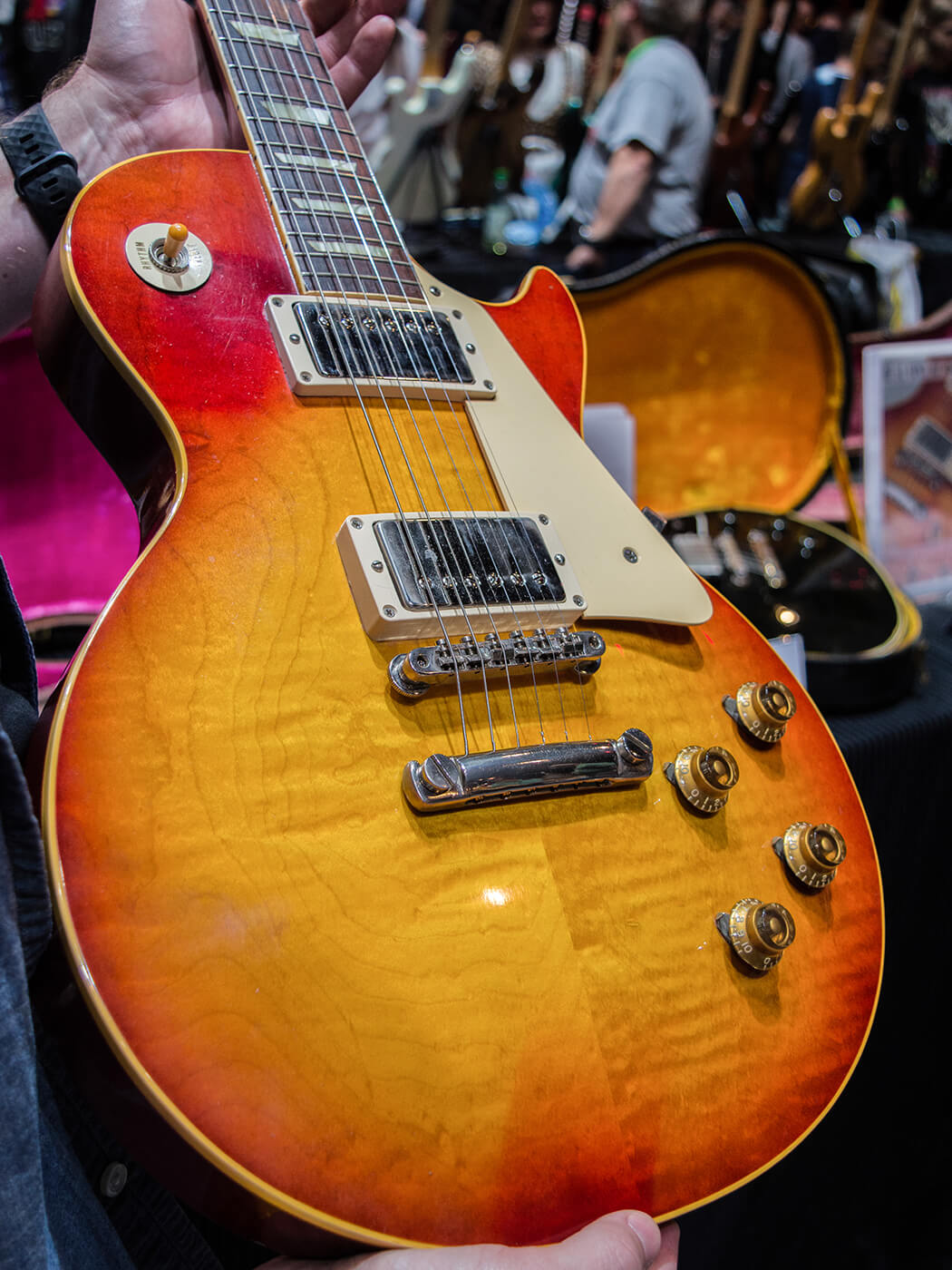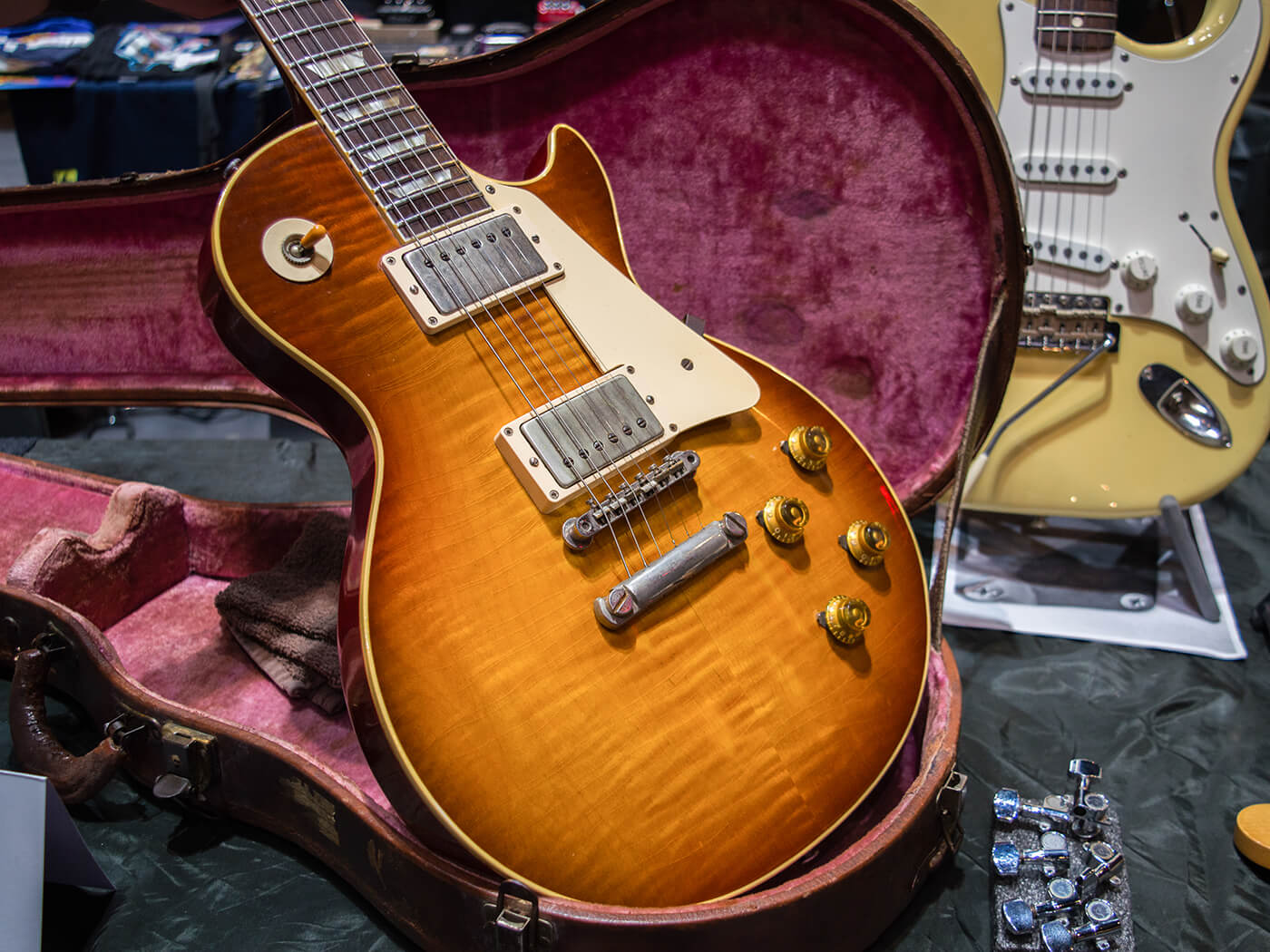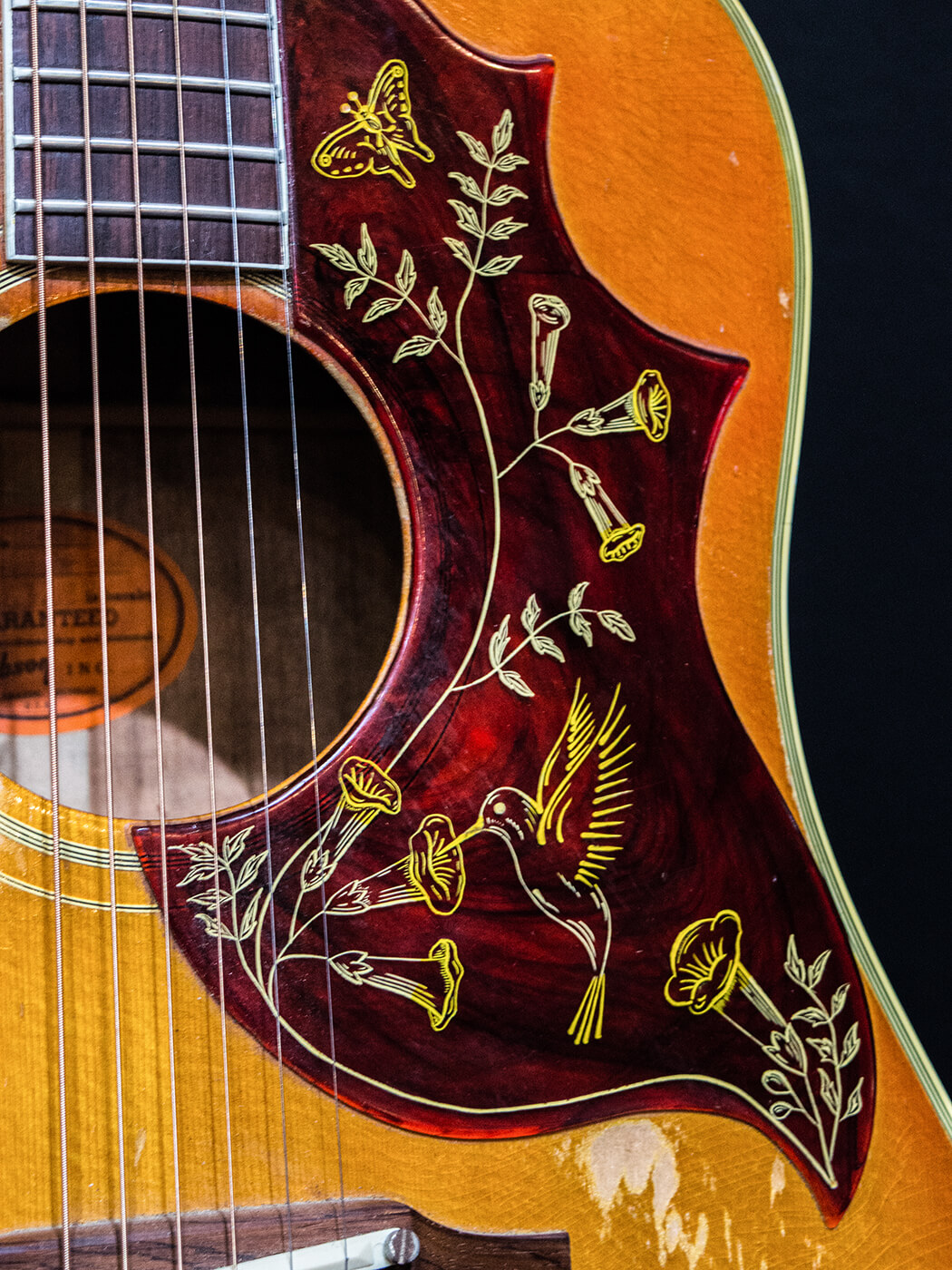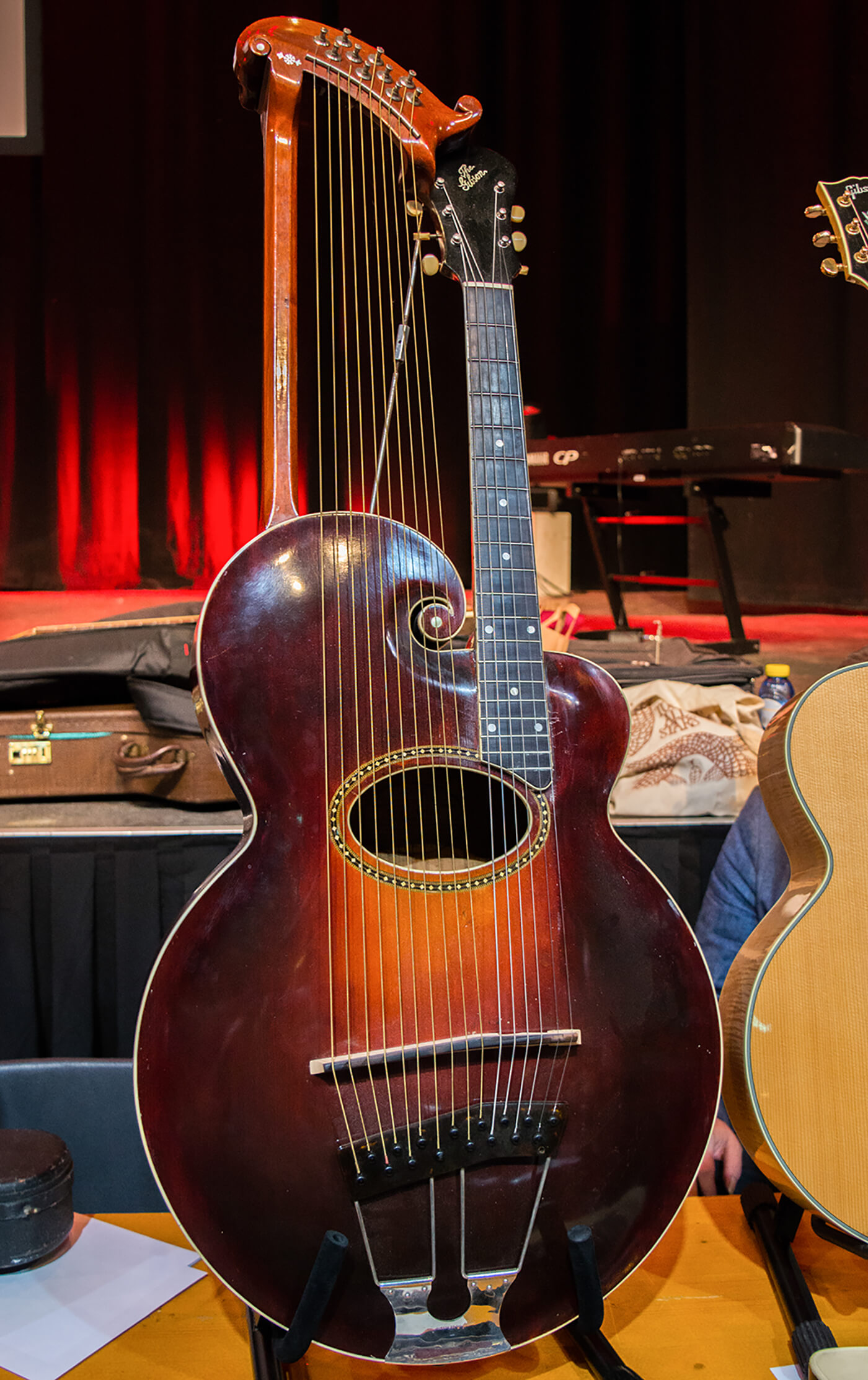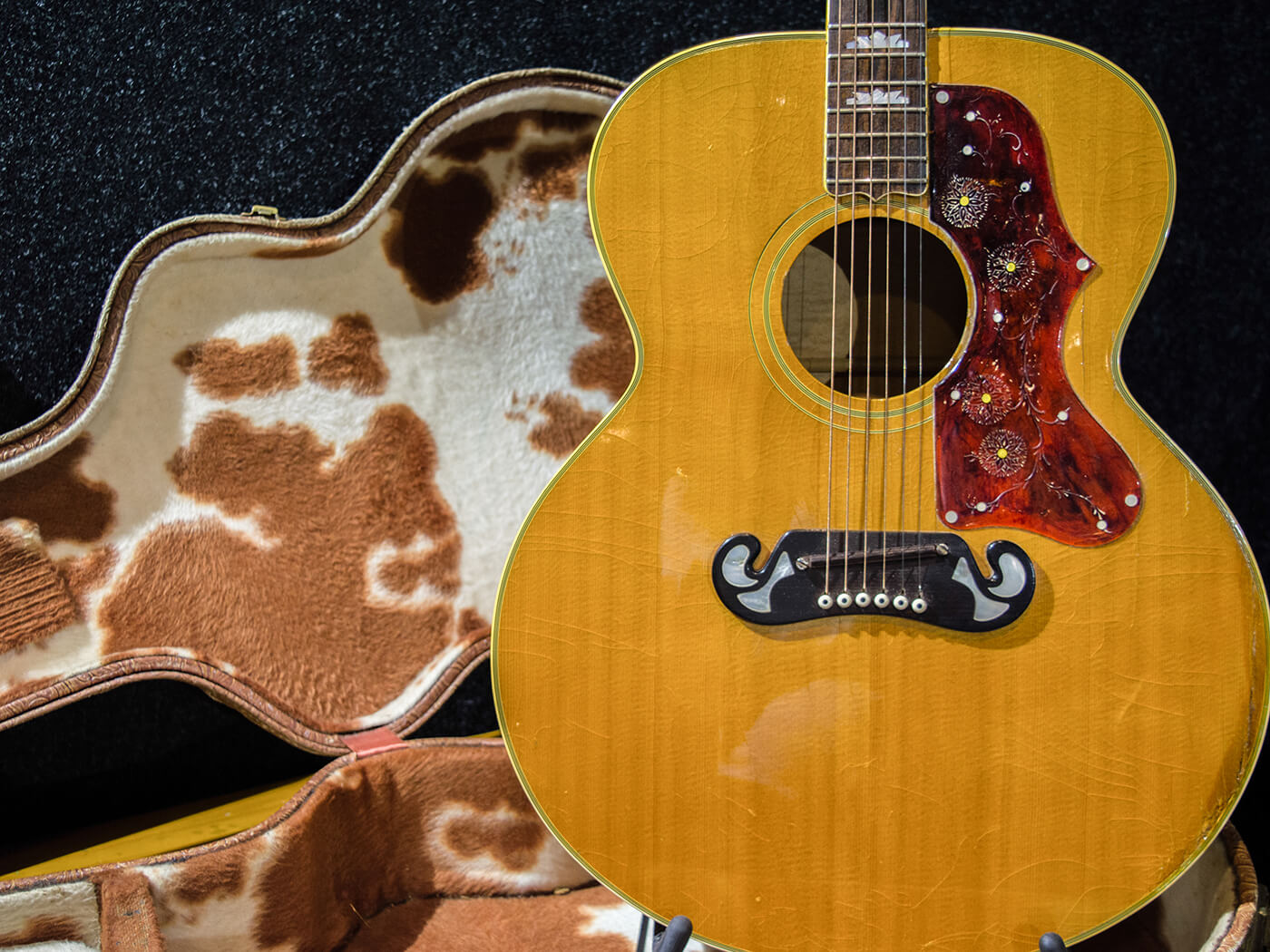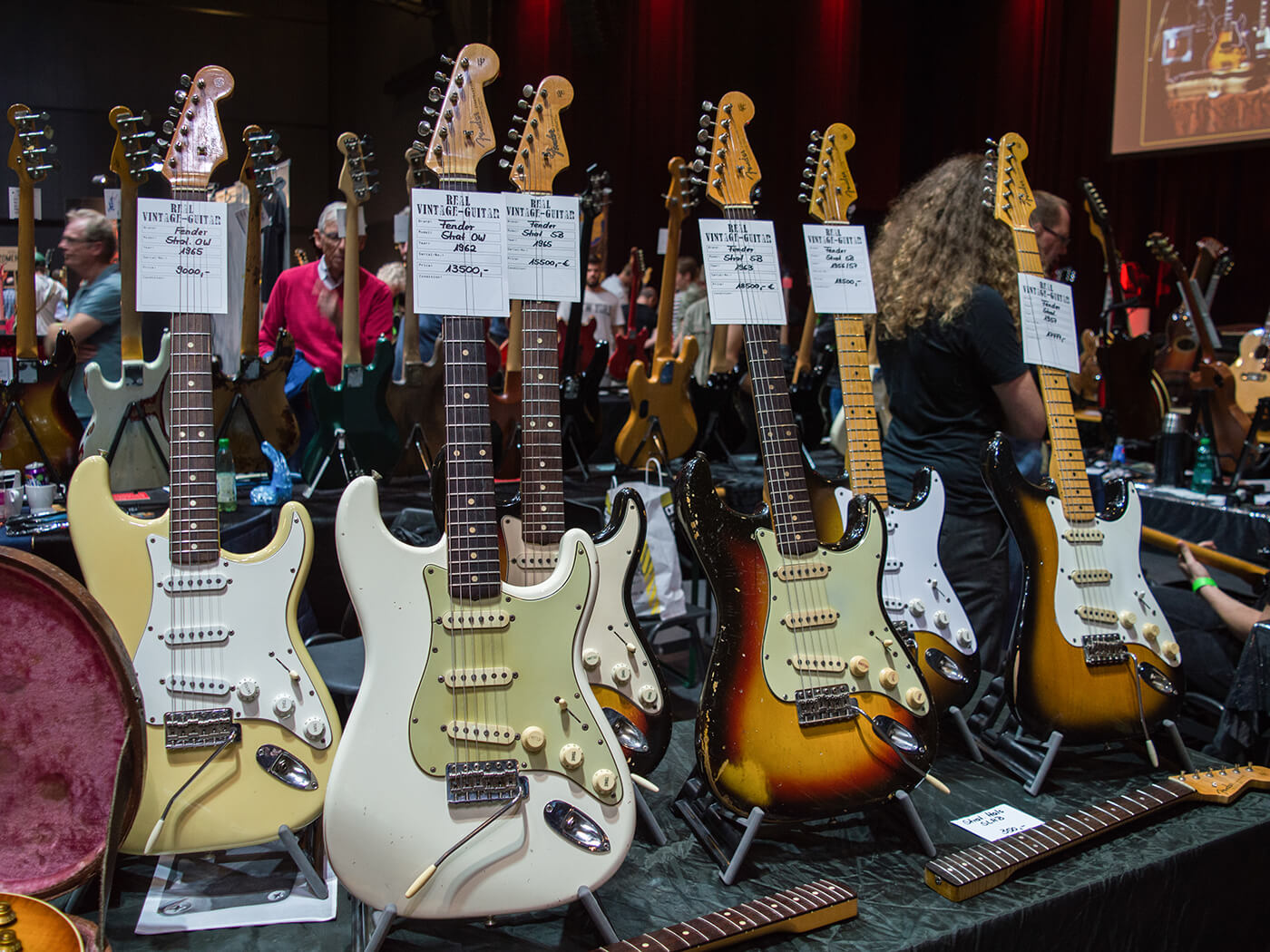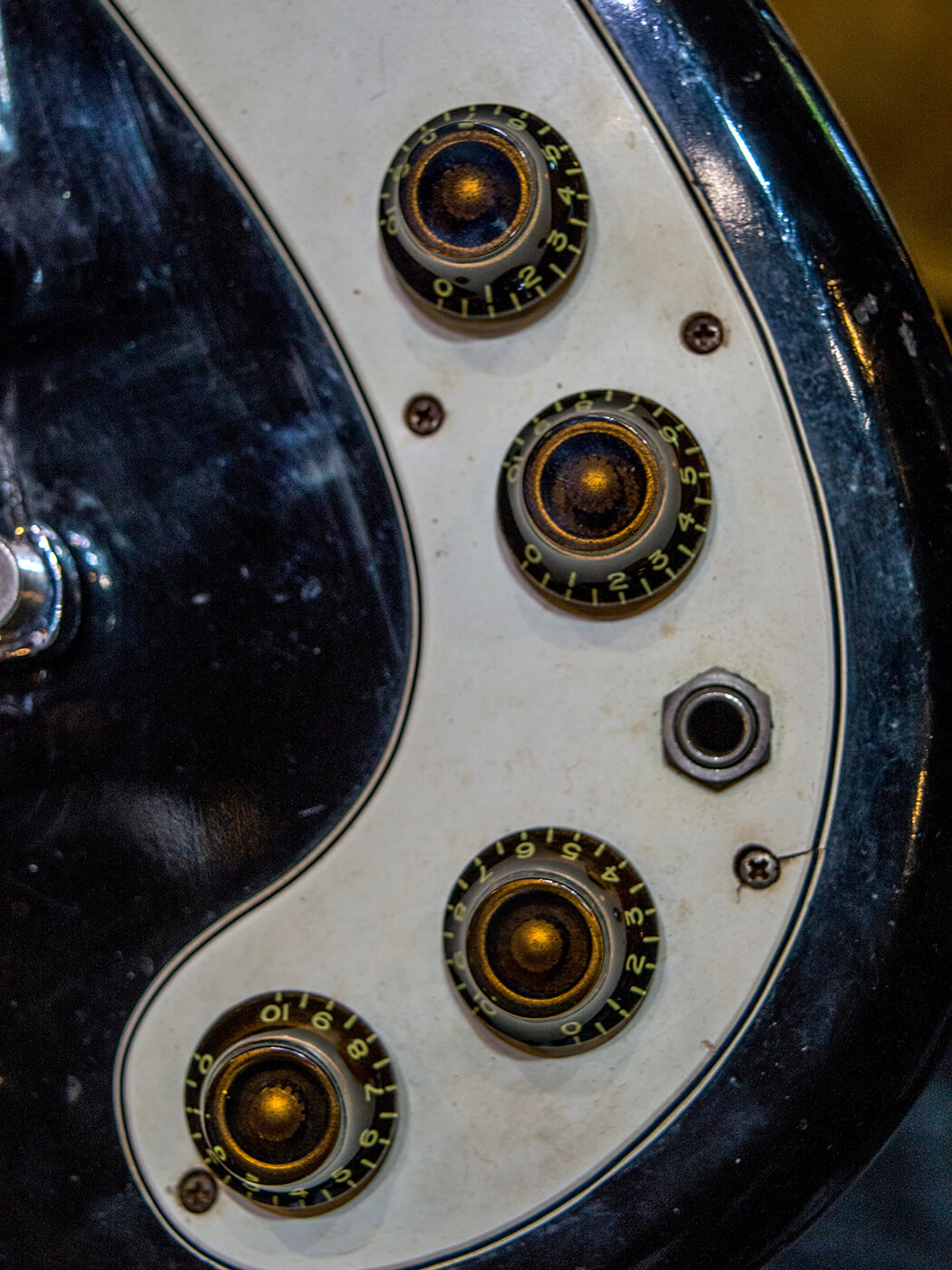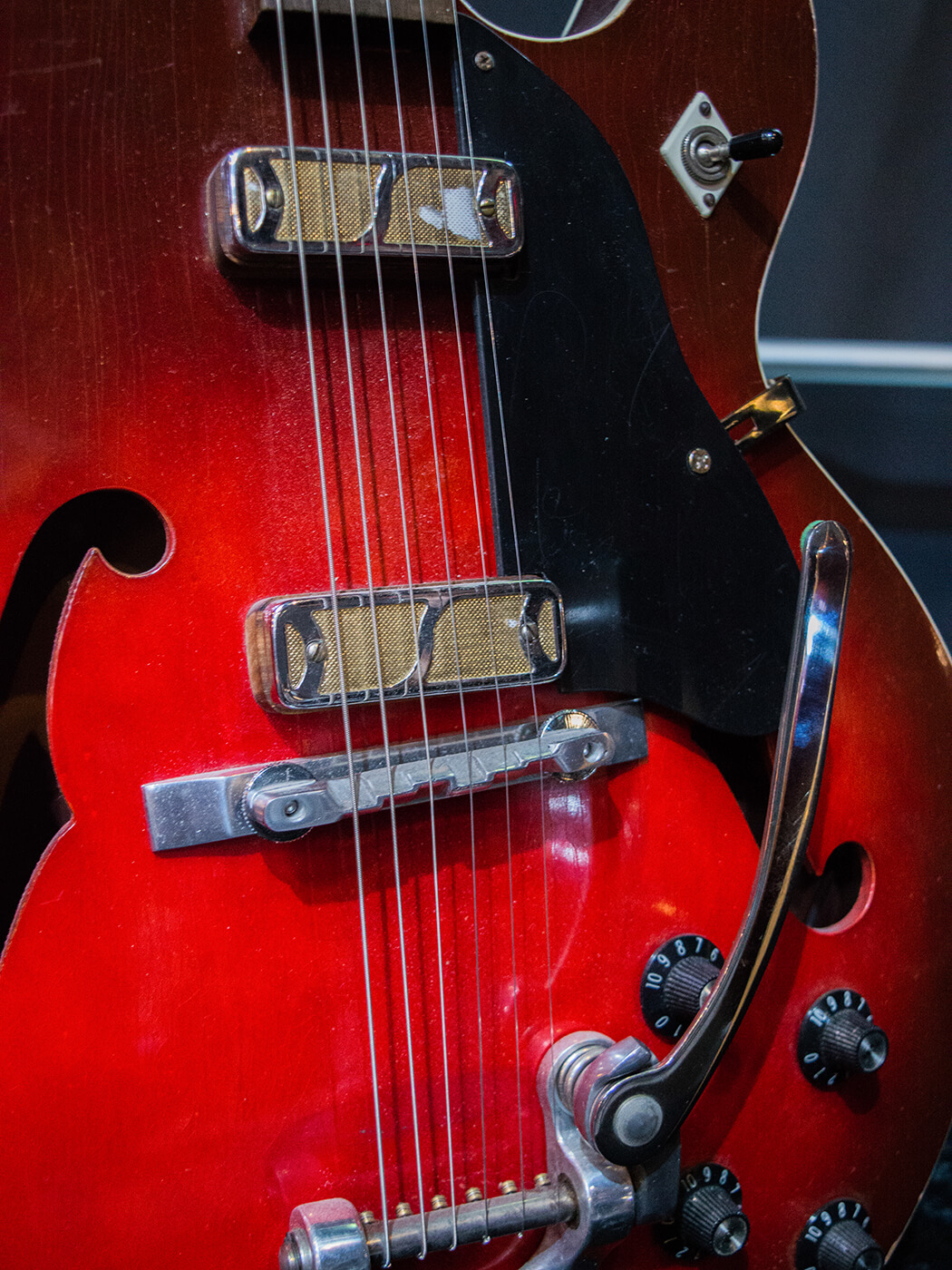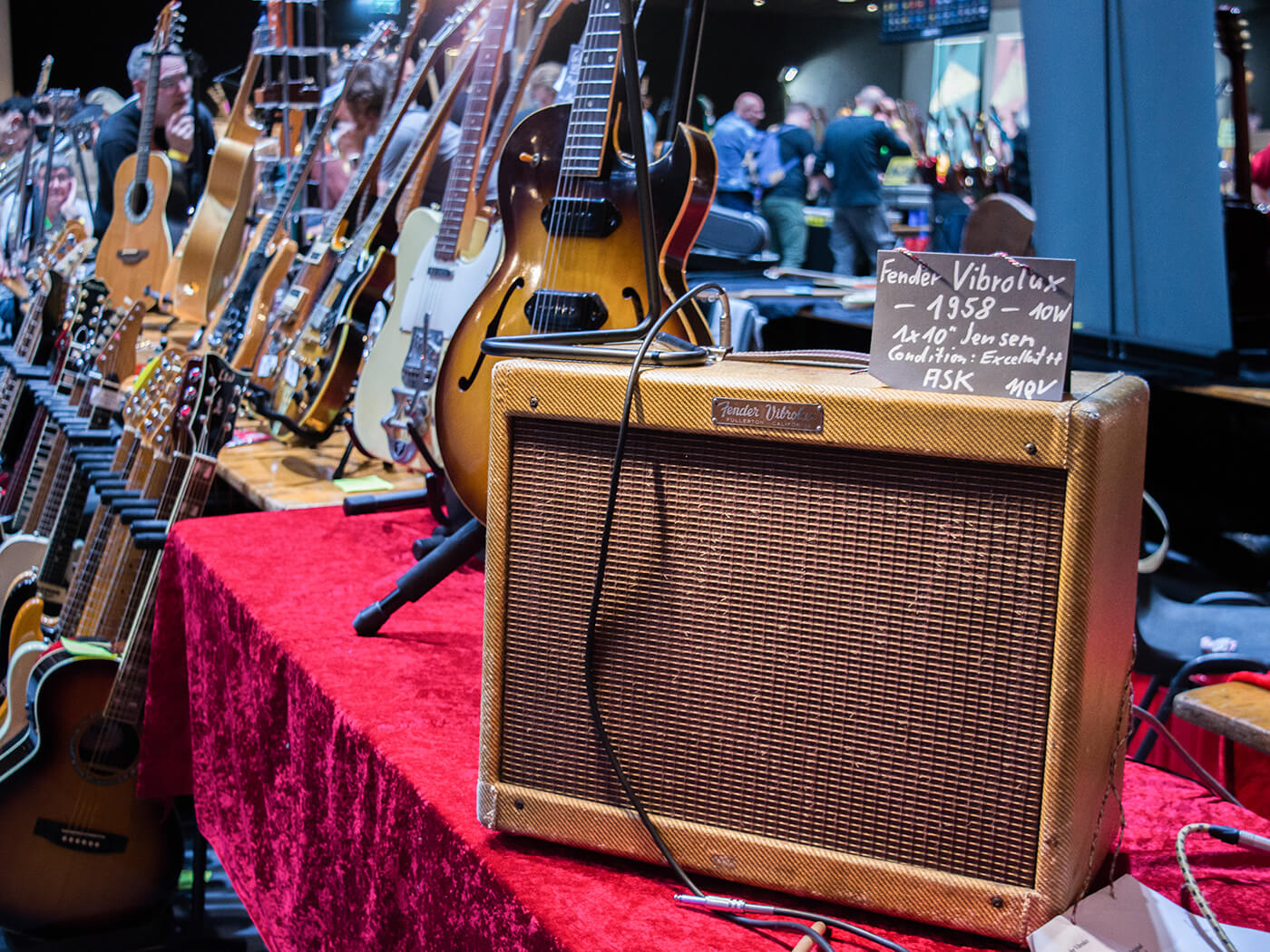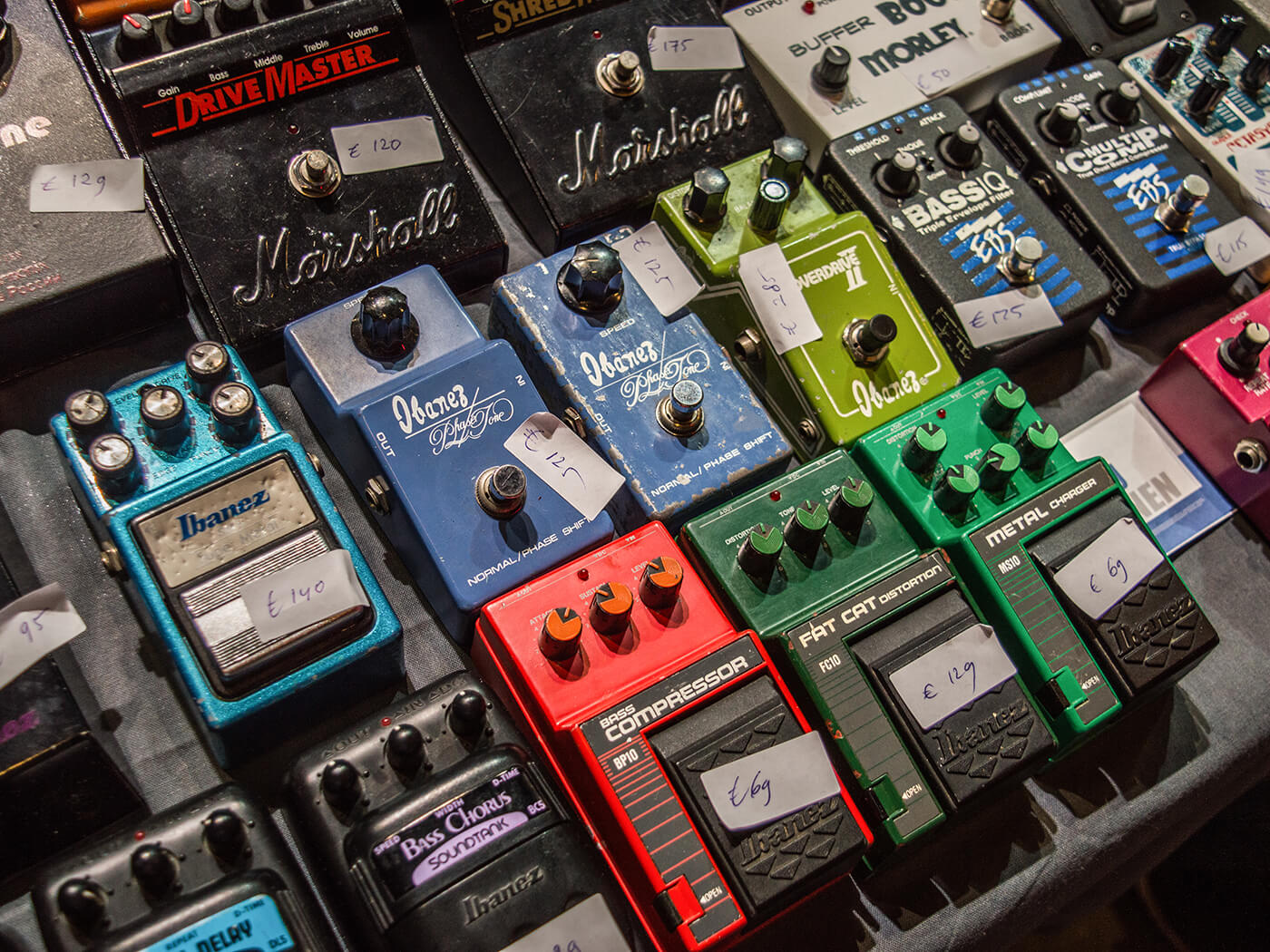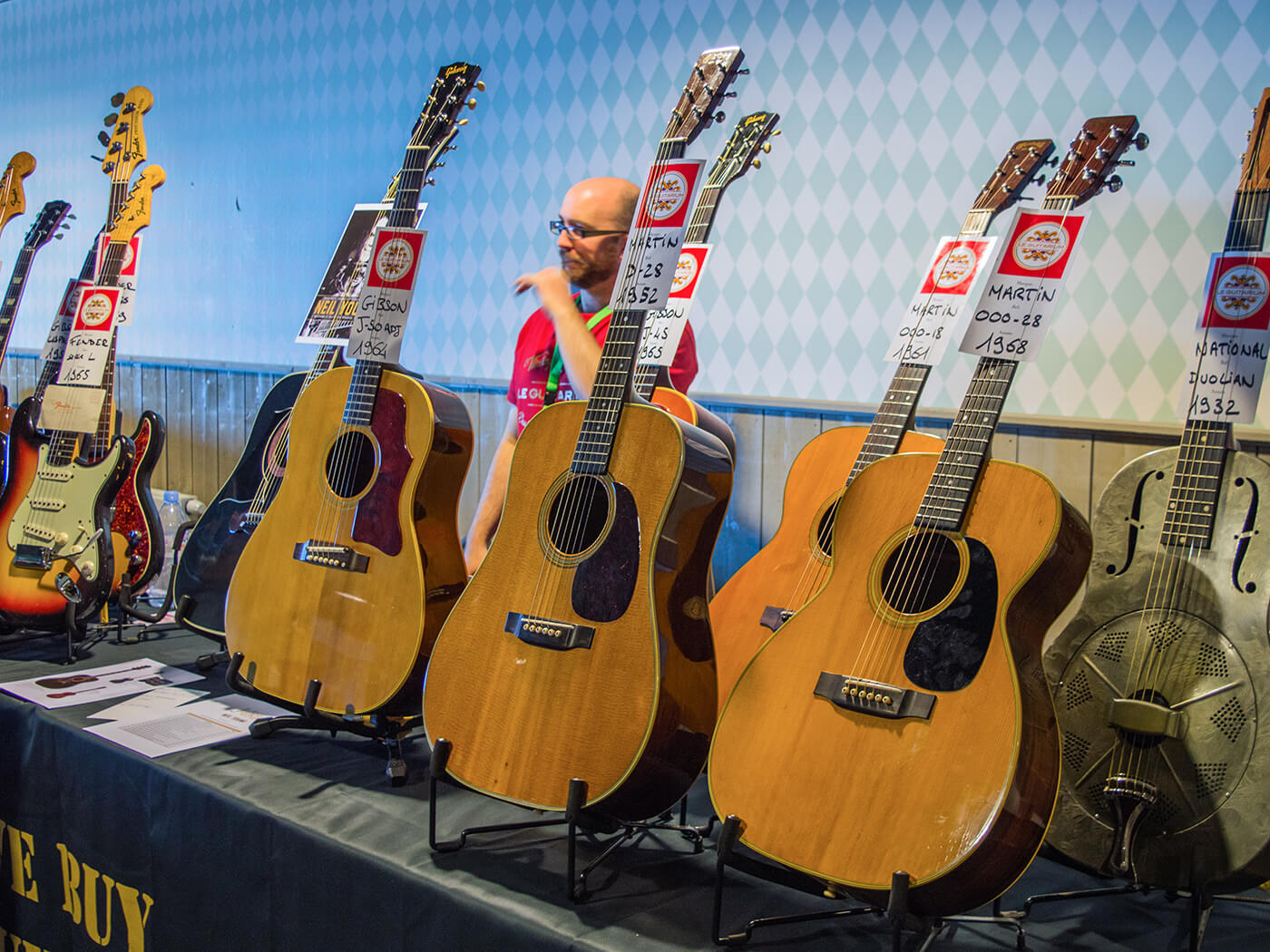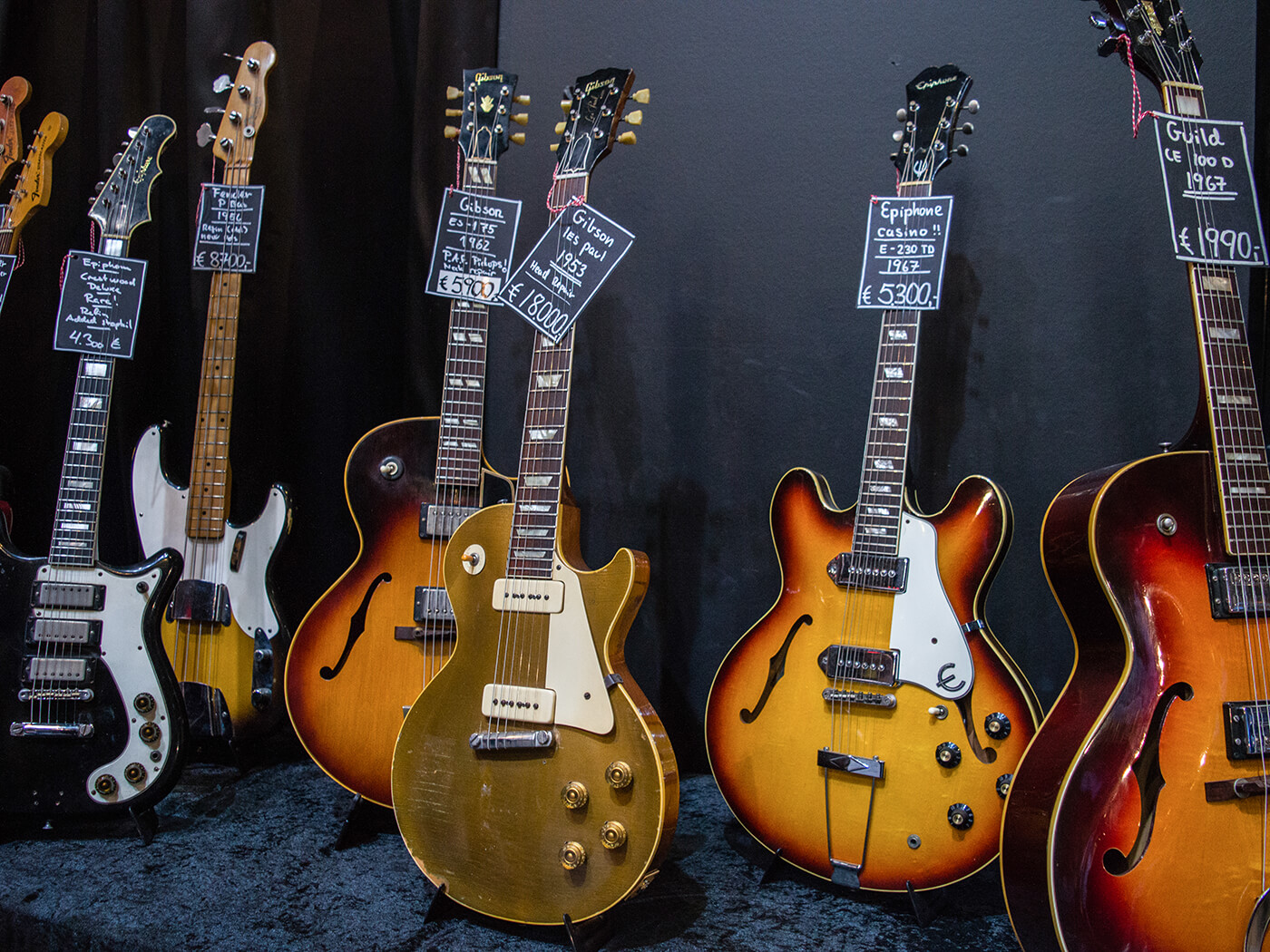In Pictures: Best of International Vintage Guitar Show Veenendaal
There are countless reasons to visit the Netherlands – now you can add Europe’s biggest vintage guitar show to the list. We head to Vintage Veenendaal to find out more.
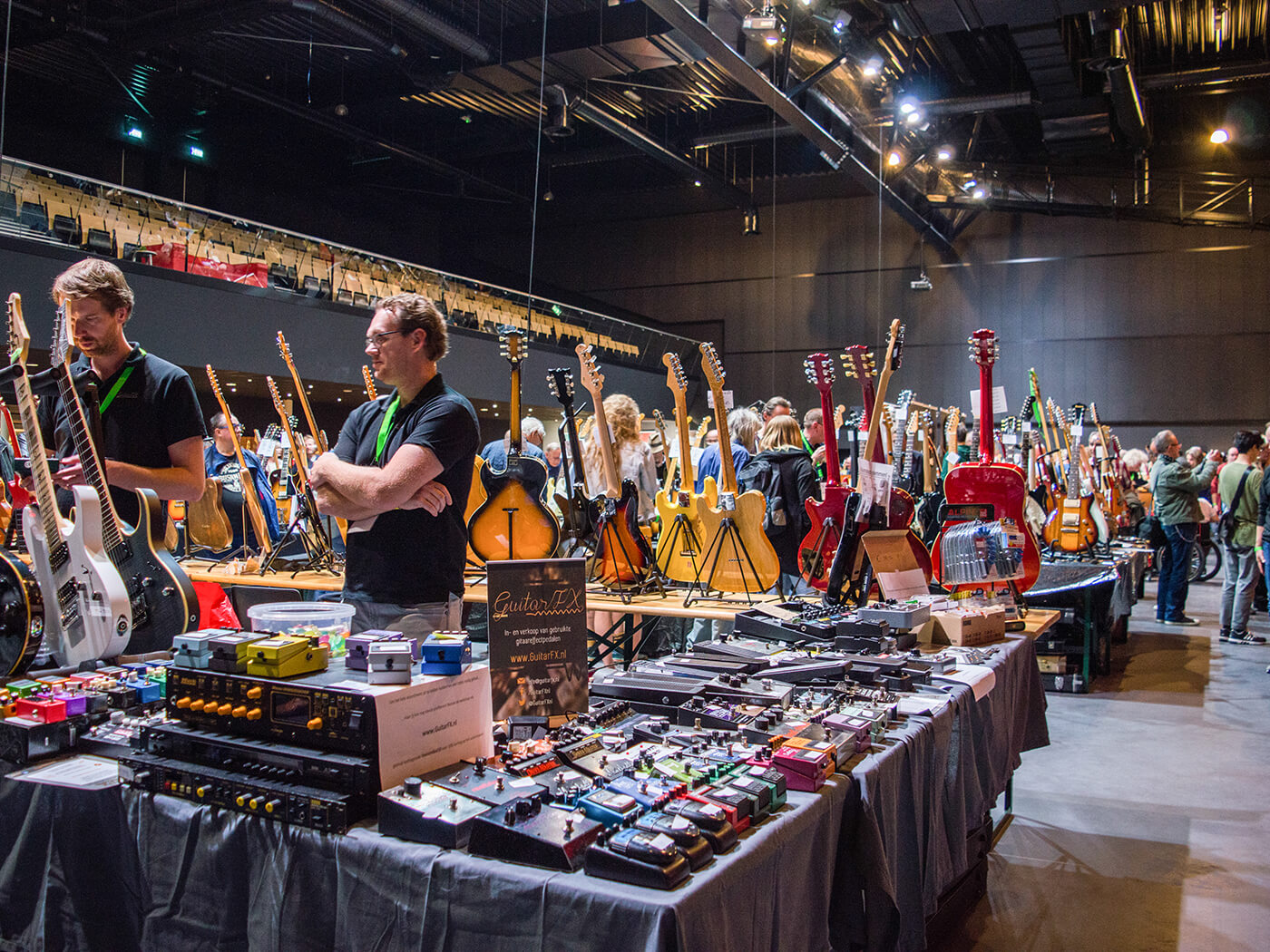
All images by Huw Price
Vintage Guitar Show Veenendaal takes place twice a year in central Netherlands and is Europe’s biggest event dedicated to vintage guitar gear, with around 100 exhibitors and over 1,200 guitars. Myself and fellow Guitar.com contributor Ed Oleszko have known about the show for a while now, and with our good buddy Daniel Nicolas offering a place to stay and a ride to the show… well, why not?
After a flight from Bristol to Schiphol, we head towards Amsterdam city centre on the bus. We alight at the magnificent brick-built Olympic Stadium and take the short walk to Daniel’s apartment.
Arriving in Amsterdam the day before the show gives us the opportunity for an extra night out. Festivities begin at Daniel’s local guitar shop, Sound Plaza, where we enjoy the hospitality of the shop’s owner Arnoud Holsboer and his sales assistant Florian Ras, and have a fine time playing some of the guitars from Arnoud’s vintage Gretsch collection. He keeps them on display at the back of the shop, so if you’re in town, do pay Sound Plaza a visit.
On show day, we load-up on fresh croissants and coffee and are joined by Daniel’s friend Roberto Briganti – a bespectacled Beatles-lover who is joining us for the day.
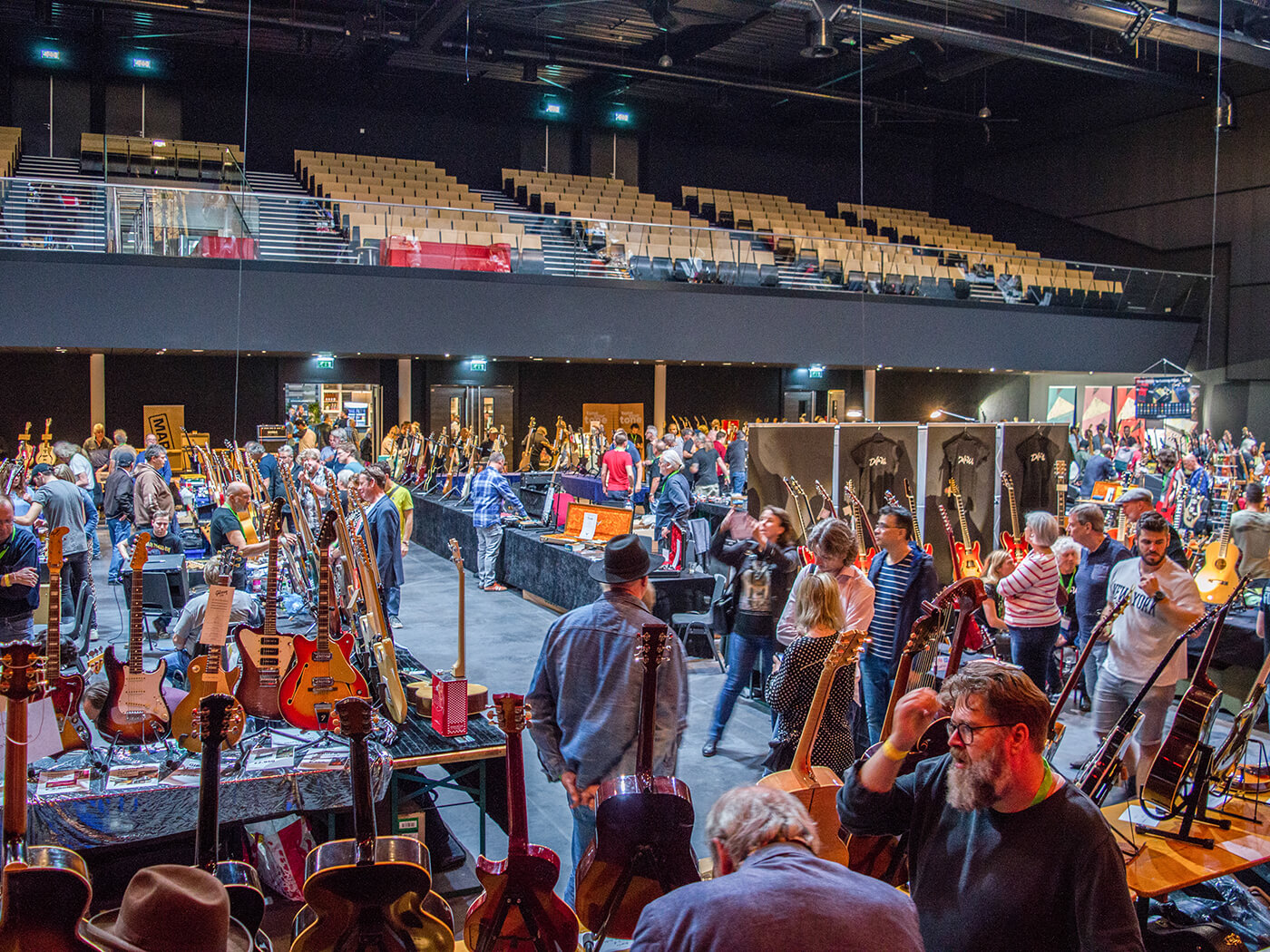
Up the junction
The journey to Veenendaal should take about an hour from central Amsterdam. Daniel takes a wrong turn, to Roberto’s great amusement, but before long we exit the A12 at Junction 23 and we’re depositing the car in the multi-storey car park adjacent to the De Basiliek exhibition hall.
Walking through the entrance, the sea of faded denim, leather jackets and greying ponytails leaves us in no doubt that we’re at a guitar show. There are a few areas to explore, and we begin in the smaller upstairs section, where two exhibitors have set up large and varied guitar displays.
One table has vintage Martin and Gibson acoustics, a 1932 National Duolian and a decent selection of 60s and 70s Fender and Gibson electrics. There’s even a black Eko acoustic that once belonged to Neil Young. The other has its prime pieces, including a 1955 Gretsch 6120 and a mid-1960s P-90 equipped non-reverse Firebird, laid out on the top, with a selection of vintage Kalamazoo, Gibson, Cromwell and Martin acoustics casually leaning against the table at the far end.
Hall of wonders
It’s an encouraging start but in comparison, the main exhibition hall is almost overwhelming. The walls and ceiling are black, the concrete floor is polished and the lighting makes the colours of the guitars pop. It’s a large space that’s absolutely full of droolworthy guitar gear. We wait a few moments for the excitement to subside and decide to approach things methodically, one aisle at a time.
There are some very noticeable differences between the Veenendaal show and most of the other guitar shows we attend. For starters, it’s unusually quiet and nobody is doing the too-loud ‘pentatonic twitch’ that so often makes the experience an ordeal.
People come here to see old friends, hang out and enjoy a chat as they amble around. The atmosphere is very relaxed, with all the guitars laid out on trestle tables for everybody to pick up and try. We feel obliged to ask permission, but it hardly seems necessary.
We see only a couple of guitars with ‘do not touch’ signs, and since both are 1950s Bursts, that seems entirely reasonable. Then again, moments after starting a conversation with their owner, he’s pulled them from their ‘Cali Girl’ cases for us to try out. One is a seemingly mint ’58 [photo 1] and the other is a ’59 [photo 2] that was restored and refinished by Florian Jaeger, and retrofitted with vintage parts.
Other vintage Gibson electric highlights include three 1950s Goldtops [photo 3], a dot neck ’61 ES-335, a smattering of ES-175s and a stunning 1950 ES-5. On the acoustic side, we spot a natural top 1926 L-1, a 1955 Hummingbird [4], a Harp Guitar [5] and a fabulous J-200 with a matching cowboy case lined with faux cowhide [photo 6].
Vintage Stratocasters are particularly well represented, with plenty of all-original and high-quality refinished instruments from the 1950s, 60s and 70s [see 7 and 8]. There are no Blackguard Teles, but we try out a ’69 with a factory Bigsby, a ’77 Thinline and a refinished ’59 Esquire. Jazzmasters are plentiful too, and Daniel is sorely tempted by a beaten-up black Musicmaster.
Considering the location, it’s no surprise there’s a plethora of European-made six-stringed curios. We spot plenty of Höfners, Ekos and even Wandres – including a bass that is bizarre even by Wandre standards.
And even the USA instruments are not all über high-end. We’re taken with a black Epiphone Crestwood [photos 9 and 10], complete with batwing headstock, a ’65 Harmony Rocket [11] and a stunning early-60s Silvertone H-75. But everywhere we look, there are interesting and unusual guitars.
As always with vintage guitars, it’s a case of buyer beware. More than once we’re discussing the originality of a finish or the possibility of a repair, only for an exhibitor to slide up and say, “there’s a bit of a story behind this one”. Even if these stories are true, you should always consider how convincing they will be if you need to sell the guitar further down the line.
There are fewer amps than we expected, but there are some tweed Fenders [12], several Marshalls and a nice-looking Selmer with mock-croc covering. It’s a similar story with pedals, although one exhibitor sells vintage pedals almost exclusively and the selection impresses, with early Ibanez units [13] and collectible Big Muffs.
Some exhibitors are actually guitar builders, offering a variety of guitars from retro-themed to ultra-modern. There are also dealers selling parts, accessories, straps, slides, tubes and just about any piece of guitar-related paraphernalia you can think of.
The smallest section of the show encapsulates the Veenendaal spirit, as the show’s organisers provide a separate space for members of the public to show their own guitars. Buying and selling is permitted and although the vibe is more ‘cool secondhand’ than ‘vintage’, we do spot a couple of nice 70s Telecasters.
Jan’s the man
An awards ceremony is one of the show’s highlights. There are two categories, with prizes for the most unusual and the most original vintage guitars. The first is a bizarre-looking nineteenth century parlour acoustic with upper frets inlayed into its spruce top and a steampunk coffin case. The second is a stunning SG Junior in rare TV Yellow, complete with its cardboard ‘crocodile’ case. Legendary Dutch guitarist Jan Akkerman is even on hand to present the awards.
Towards late afternoon things are winding down, punters are drifting off and the exhibitors begin packing away. Roberto has found a Martin for one of his students, but the rest of us have resisted temptation. However, we have discovered that exhibitors selling parts and accessories are keen to shift what’s left of their stock at the end of the show, and we each come away with several sets of bargain strings.
Daniel gets us back to Amsterdam without further detours. A second night out is followed by a dawn dash to Schiphol airport and we’re back home in time for a late morning brew.
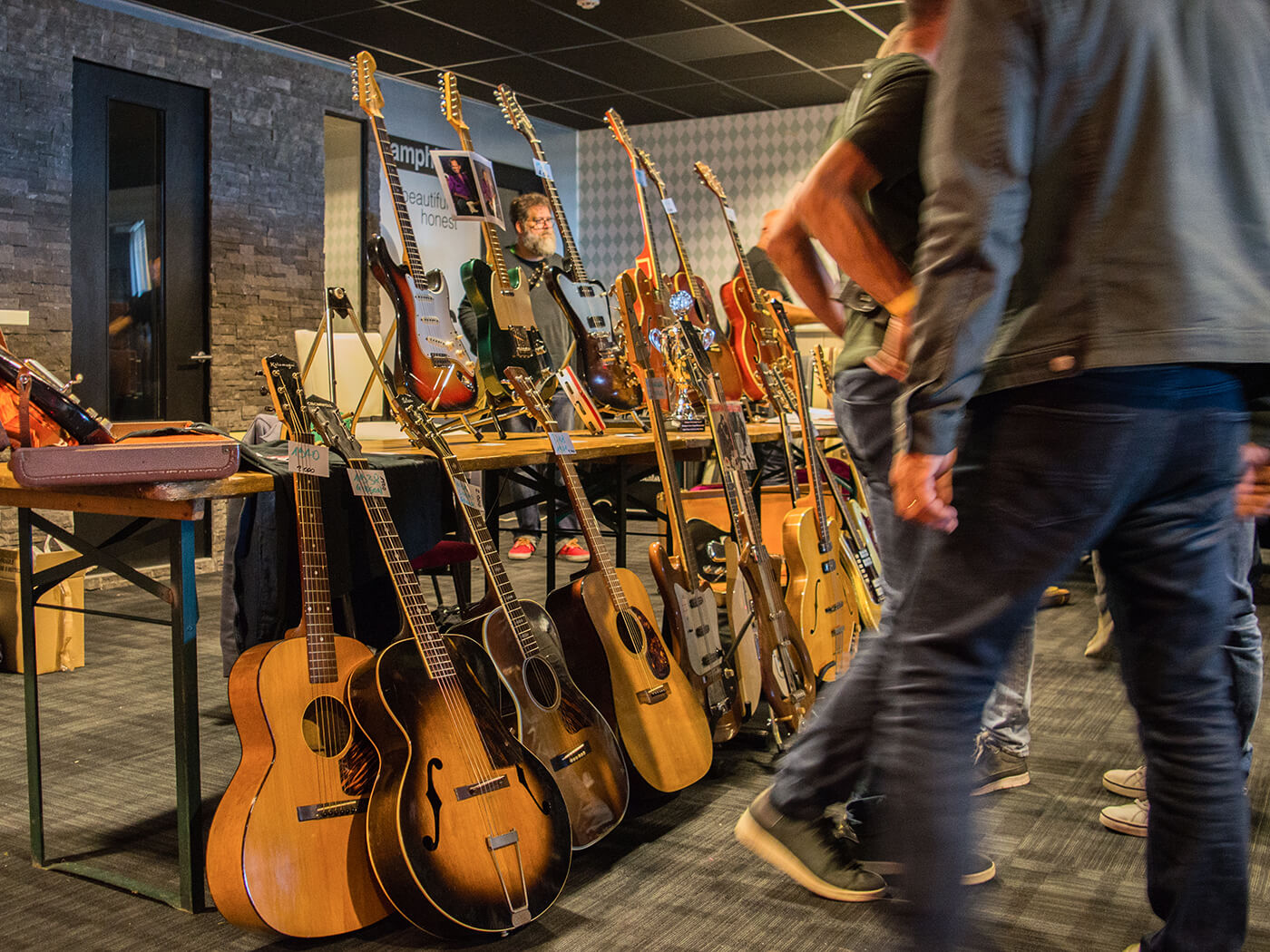
Planes, trains & automobiles
Clearly it helps to have friends with whom you can stay, but even after adding parking costs to the flights, travelling to Veenendaal from South Wales hasn’t worked out much more expensive than return rail fares to London. The train from Amsterdam Central stops at Veenendaal-De Klomp station, which is a 10-minute walk away from the show. There are buses too, which are cheaper but take a bit longer.
Accommodation in Amsterdam tends to be expensive, but there are various hotels in the area of the show, including Van De Valk Veenendaal, which is just a five-minute walk away. Staying near the show may be more convenient, as well as cheaper. 2020’s Vintage Guitar Show Veenendaal show dates are 14 March and 19 September. Maybe we’ll see you there…
For more information, visit vintageveenendaal.eu.

